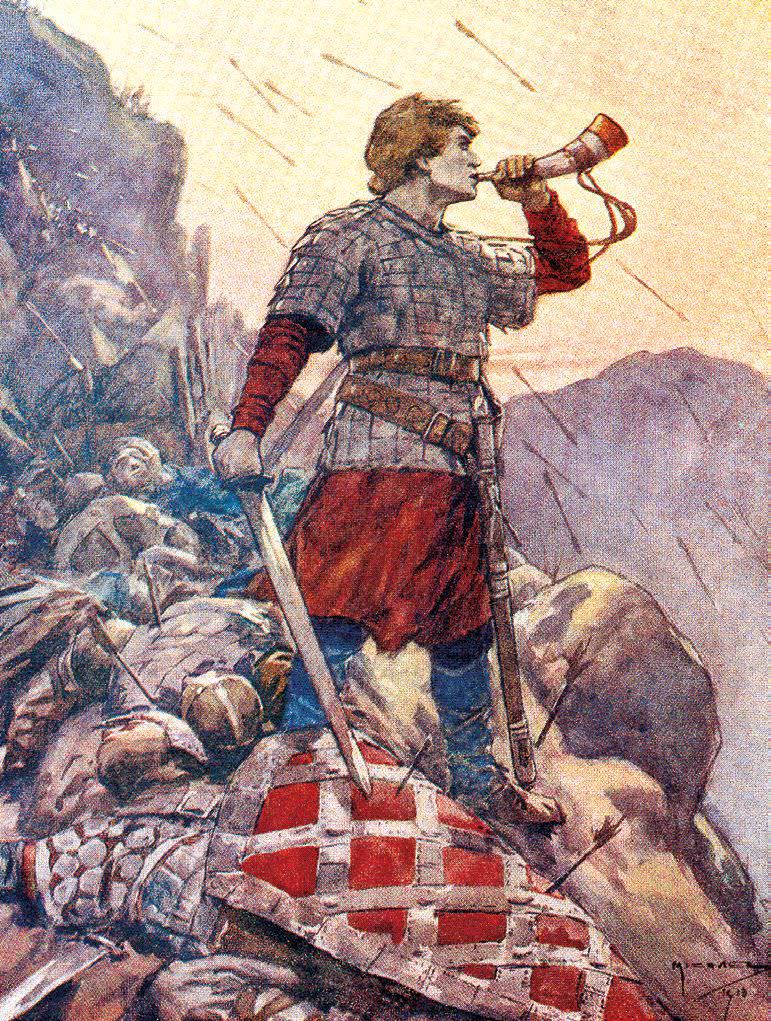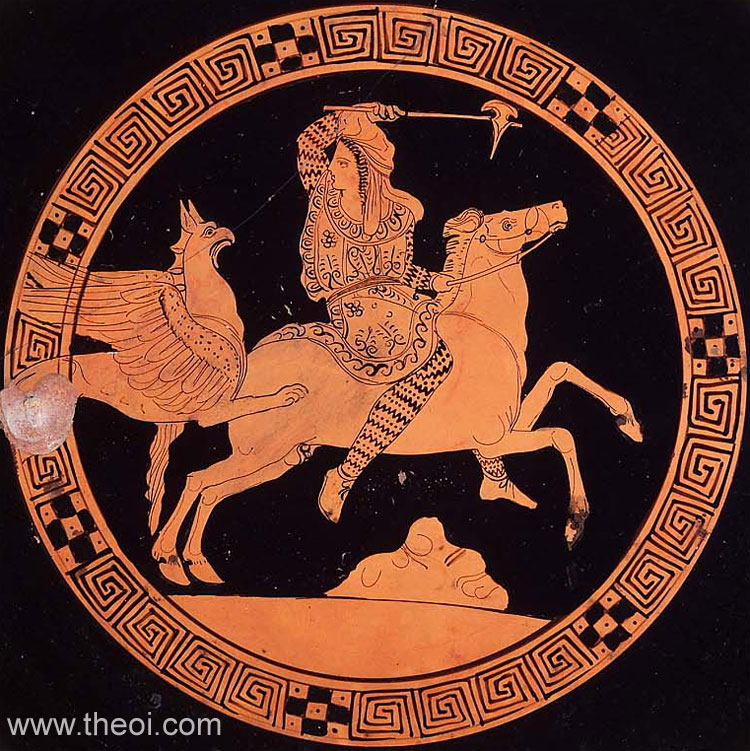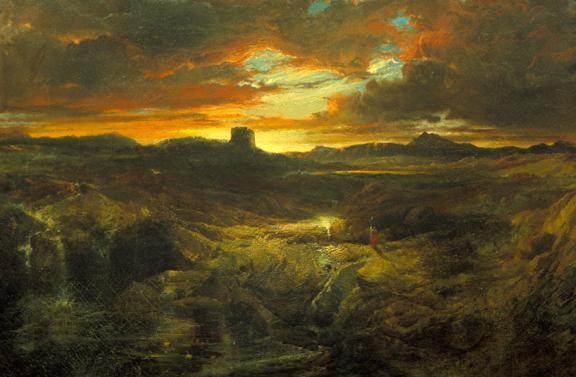
I think I first heard of Ludovico Ariosto’s Orlando Furioso in a blurb about C.S. Lewis comparing J.R.R. Tolkien’s Lord of the Rings to it. Well, they do both have a magic ring that makes people invisible, and a monster called an Orc. The thing is, while I read it, I found it difficult to follow. I don’t know if it was the translation or something on my part. I kind of feel like an impostor if I don’t actually read the thing I’m talking about, but I’ve looked at summaries and found some significant stuff that didn’t register with me when I was reading it. But there’s quite a bit of the fantastic and absurd about it. It’s part of a tradition of fanciful, larger than life tales of Charlemagne and his court.

Roland, an officer in the Emperor’s service, is attested to in a historical source as serving on the border with Brittany and dying to the Basques in the Battle of Roncevaux Pass. Starting with the eleventh century Chanson de Roland, epic poetry made him into a major hero, not only a warrior of renown but also somewhat of a knight errant. And he’s sometimes said to be Charlemagne’s nephew. In these stories, he and his compatriots are fighting not Bretons or Basques but Muslim invaders, presumably a reflection on European views of the time they were writing. In the fifteenth century, Matteo Maria Boiardo wrote Orlando Innamorato, using the Italian form of Roland’s name. The Furioso was a direct follow-up by a different author. Anyway, in the legends that grew up around this guy, he’s said to have wielded the sword Durendal, which was indestructible and could cut through boulders. There are a few different stories as to how he obtained it, but various sources claim that it originally belonged to Hector of Troy, and the Amazon Penthesileia used it for a while. Some time later, the hilt came to contain St. Peter’s tooth, blood of Basil of Caesarea, hair of Denis of Paris, and a piece of Jesus’ mother Mary’s clothes. The mixture of ancient Greek with Christian mythology is interesting, and not at all unusual. One of Roland’s earliest feats was killing the giant Ferragut, who was only vulnerable in his navel, sort of like King Hippo.

I don’t know. I would have expected bigger.
The Innamorato has him falling in love with Angelica, a Chinese princess who came to France initially to try to undermine Charlemagne’s knights. Pretty much all of the knights fall for her, actually, although it’s the worst for Roland and his cousin Rinaldo. The story has both Rinaldo and Angelica drinking from fountains that made people love or hate each other, created by Merlin for Tristan and Isolde, so I guess that’s another sort of mythology mixed in. There’s also water that makes people forget things, along the lines of Lethe and the Water of Oblivion from Oz. The fairy Falerina uses it to trap people in her enchanted garden, and Angelica saves Roland with her magic ring, which can break any enchantment and turn a person invisible. I’d mentioned before how Ruth Plumly Thompson’s evil fairy Faleero might be a reference to the painter Luis Ricardo Falero, but I guess Falerina could be another possible source. It apparently derives from the French for “legend.” Morgan le Fay also plays a role in the story. Furioso is apparently the first appearance of a hippogriff, a cross between a griffin and a horse.

That griffins and horses were natural enemies was a long-standing tradition, supposedly deriving from tales of the Arimaspoi fighting griffins on horseback, making a cross between the two exceedingly unlikely.

The hippogriff in the poem belongs to the sorcerer Atlante, who uses the animal to take his foster son Ruggiero (the Italian version of the name Roger, but it makes me think of another Oz character) to an island ruled by the sorceress Alcina, who takes him for a lover.

His goal is to keep Ruggiero from converting to Christianity, as a prophecy has indicated that he would die shortly after doing so. He’s saved by Melissa, a former student of Merlin’s who tends to his tomb. Ruggiero then rides the animal to rescue Angelica, who is being sacrificed to a sea monster in the same manner as Andromeda. The monster is called an orc, likely after the animal described by Pliny the Elder as a sea monster with long teeth, the origin of our word “orca” for killer whales. Ludovico describes it as a writhing mass with pig-like eyes and jaws, and very thick scales.

Tolkien’s use of the word “Orc” comes from Beowulf, and I don’t know for sure that there’s any etymological connection, but it seems to have generally just meant “monster.” Ruggiero stuns the monster with a glare from his shield, leaving Roland to kill it by throwing an anchor in its mouth and letting it bleed to death.

Astolfo, another paladin who’s the son of the King of England, later rides the hippogriff to Ethiopia in an attempt to help Roland, who went crazy when Angelica married another man. He saves Prester John from some Harpies, and rides to the Terrestrial Paradise. That and a gate to Hell are apparently not that far from Ethiopia. With help from John the Apostle, he rides in Elijah‘s flaming chariot to the Moon, which is described as having a shiny metallic surface and being where all the things lost on Earth go, including figurative as well as physical ones.
He finds a bottle containing Roland’s wits, and returns them to the ailing knight.

There’s also likely a connection to the Robert Browning poem “Childe Roland to the Dark Tower Came,” about a young knight who seeks the titular tower in a bleak wasteland, with the poem ending as soon as he gets there. It’s not clear WHY he wants to go there, but maybe it’s some sort of initiation or something. The direct inspiration is from a bit of nonsense verse in King Lear, but the poem ends with Roland blowing his horn, as does his namesake at the end of the Chanson de Roland. In the earlier work, it’s described as an oliphant, a hunting horn made from an elephant’s tusk. Stop buying from poachers, Roland! I haven’t read any of Stephen King’s Dark Tower books, but I understand their hero, the Gunslinger, is also named Roland, in reference to the Browning poem. And speaking of Roland and guns, is that also where the name comes from in the Warren Zevon song “Roland the Headless Thompson Gunner,” about a Norwegian mercenary in Africa who remains active after a former comrade shoots off his head?
Or, since Zevon played the piano, maybe that character was named after the keyboard. I will say that it’s 1700 miles from Mombasa to Johannesburg, so that’s some powerful shooting.

Another character linked to the Roland stories is Ogier the Dane, who first appears in the Chanson Roland. According to later lore, he ended up in France as a servant to Charlemagne when his father, the Danish King Geoffroy, is unable to pay his debts to the Emperor. He becomes known as a great warrior, and wields a magical short sword called Cortana, which had belonged to Tristan, and later became used in English coronations. From what I understand, which isn’t that much, that name was used in Halo because the creator had named a similar character Durandal in an earlier game. Ogier had a rivalry with Charlemagne’s son Charlot, who killed his son in a fit of rage over losing a game. This led Ogier to rebel against the Emperor, although they later reconciled, and Champot was killed by Huon of Bordeaux. He ruled a kingdom in the Middle East, and was eventually taken to Avalon by a fire-breathing horse called Papillon. Morgan le Fay, who had marked him at birth, took her as his lover for 200 years.

He briefly returned to France to help King Hugh Capet to fight off more Muslims, then came back to Avalon. In another tradition, he’s in an enchanted sleep until he’s needed again. The character’s title might not have even originally indicated he was from Denmark, but he later became a folk hero in that country.



Pingback: Santa and the Asteroid | VoVatia
What a fantastic recount of the myth of Roland. Thank you for this and for maintaining this blog, it is a genuine treasure trove for an artist and lover of ancient tales.
You’re welcome!
Pingback: Snarks and Grumkins | VoVatia